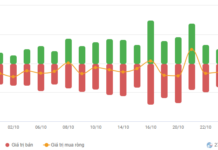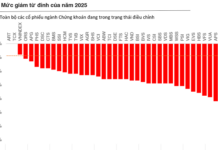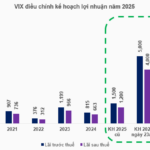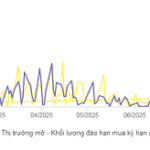At the conference on trade promotion with the theme “Assessing the export situation and orientation for trade promotion in the rice market in 2024” on February 29, Mr. Tran Quoc Toan, Deputy Director of the Import and Export Department (Ministry of Industry and Trade), stated that rice exports in 2023 achieved remarkable results.
GREATER OPPORTUNITIES AND CHALLENGES
According to customs statistics, in 2023, Vietnam exported 8.13 million tons of rice worth 4.67 billion USD, an increase of 14.4% in quantity and 35.3% in value compared to the same period in 2022. The average export price reached 575 USD per ton, an 18.26% increase compared to the average price in 2022.
As of the end of January 2024, Vietnam’s rice exports had reached over 512,000 tons worth 362 million USD, a 42.8% increase in quantity and a 94.5% increase in value compared to the same period in 2022.

The Asian market continued to be the largest export market in 2023, with over 6 million tons, accounting for 75% of the total export volume. Africa followed with nearly 1.34 million tons, accounting for 16.5% of the total rice export volume. Although the European market accounted for a small proportion of Vietnam’s total exports (about 1.6%), it still reached 132,600 tons.
In traditional markets, the Philippines was the largest rice export market for Vietnam, accounting for 38.7% of the total export volume, equivalent to 3.14 million tons.
Indonesia ranked second, accounting for 14.5% of Vietnam’s total rice export volume, equivalent to 1.18 million tons, an almost 10-fold increase compared to the same period in 2022.
China ranked third, accounting for over 11.3% of the total export volume, equivalent to 918,300 tons, a 10.1% increase compared to the same period in 2022.
However, the representative of the Ministry of Industry and Trade also acknowledged that despite the achievements, there were still limitations in rice exports in recent years.
Specifically, according to Mr. Toan, the import market is still not diversified, and still relies on a number of key traditional markets such as the Philippines, China and Indonesia.
In addition, the global rice market situation is changing rapidly, and the policy actions of some rice-producing and exporting countries have had a negative impact on the global food supply chain, causing a general psychological impact on the market.
Vietnamese rice traders have not focused on developing supply chain linkages or implementing solutions for traceability and data information systems to meet the requirements of import markets.
In 2024, according to the U.S. Department of Agriculture (USDA), global rice supply is forecast to decrease, while the import demand of many countries is expected to increase. For instance, the global rice trade will continue to be affected by India’s decision to temporarily suspend rice exports.
Additionally, global rice supply is projected to decrease, with India, which accounts for 40% of global production, expected to produce 4 million tons less than the previous year, reaching only 132 million tons. Other markets such as the Philippines, Indonesia, Thailand, and Cambodia are also forecasted to decrease production due to the impact of El Nino and climate change.
The global ending stocks for the 2023-2024 season is projected to be 167.2 million tons, a decrease of 8.6 million tons compared to the previous season and the lowest stock level in the past 6 seasons.
However, there are still positive indications in import forecasts for traditional markets such as China, Indonesia, and the Philippines. Vietnam’s advantageous markets with signed free trade agreements, such as the EU, South Korea, and Japan, as well as potential markets like the United States and Middle Eastern countries, continue to show potential for increased trade in rice.
EXPANDING AND EXPLOITING NICHE MARKETS
In this market context, to ensure operational targets and take advantage of increasing market share in potential markets, Mr. Toan announced that the Ministry of Industry and Trade will urgently review and improve Decree No. 107/2018/ND-CP of the Government on rice export business to enhance the legal framework for rice export mechanisms, and create a transparent, fair, and favorable business environment for rice exporters.

The Ministry will also coordinate with the Ministry of Foreign Affairs and the Ministry of Agriculture and Rural Development to proactively negotiate to diversify export markets, utilizing opportunities to increase market share in new and potential markets for the enhancement of Vietnam’s competitiveness in the rice industry.
Furthermore, monitoring the global rice market situation and the policies of major rice-producing and exporting countries, and timely informing the relevant ministries, associations, and businesses engaged in rice export activities to provide proactive regulation and management of rice production and export activities.
Enhancing trade promotion activities to promote cooperation in rice trade with traditional markets such as Indonesia, the African region, and China. Exploiting niche markets with fragrant and high-quality rice varieties.
At the conference, Mr. Nguyen Ngoc Nam, Chairman of the Vietnam Food Association, stated that it is projected that the total rice production in Vietnam in 2024 will remain at the level of 43.5 million tons in an optimistic weather condition. However, the amount of rice inventory brought into 2024 is expected to decrease significantly, therefore, close coordination is needed to match the harvested rice production with domestic consumption needs.
Rice exports in 2024 are forecasted to remain dynamic due to an increase in demand from major Southeast Asian consuming markets such as Indonesia, the Philippines, Malaysia, China, and Africa, due to concerns that the El Nino heatwave will continue until mid-2024.
The domestic rice price is also expected to remain stable at a high level and maintain an upward trend. Therefore, the rice export target for 2024 is about 6.5 million tons.
In 2024, the Vietnam Food Association will continue to make efforts to fulfill both tasks of ensuring domestic consumption needs, maintaining food security, and fulfilling international commitments.
Accordingly, Mr. Nam recommended that the Ministry of Industry and Trade study the negotiation and signing of preferential trade agreements with potential export markets, taking advantage of the review process of the implemented agreements to propose that partners open up more opportunities and increase quotas for Vietnam.
In addition, it is necessary to enhance awareness among traders about the regulations in the new-generation free trade agreements, bilateral agreements, to maximize the tariff quotas for Vietnamese rice.





































